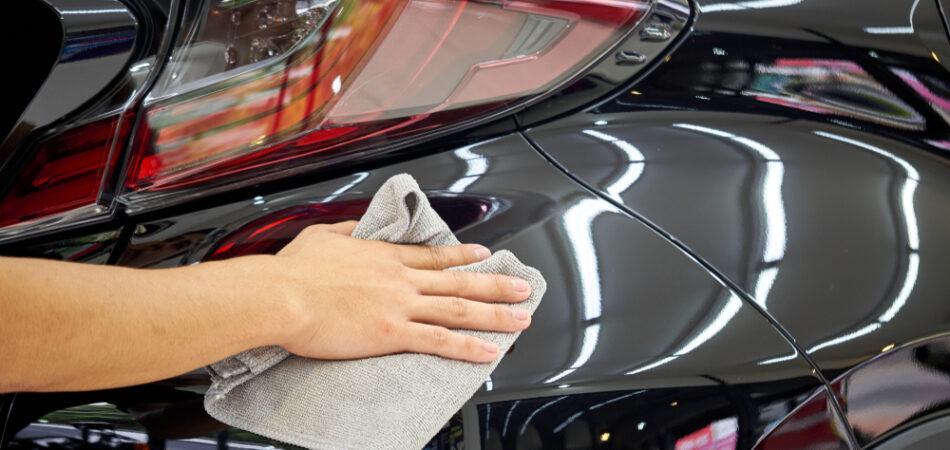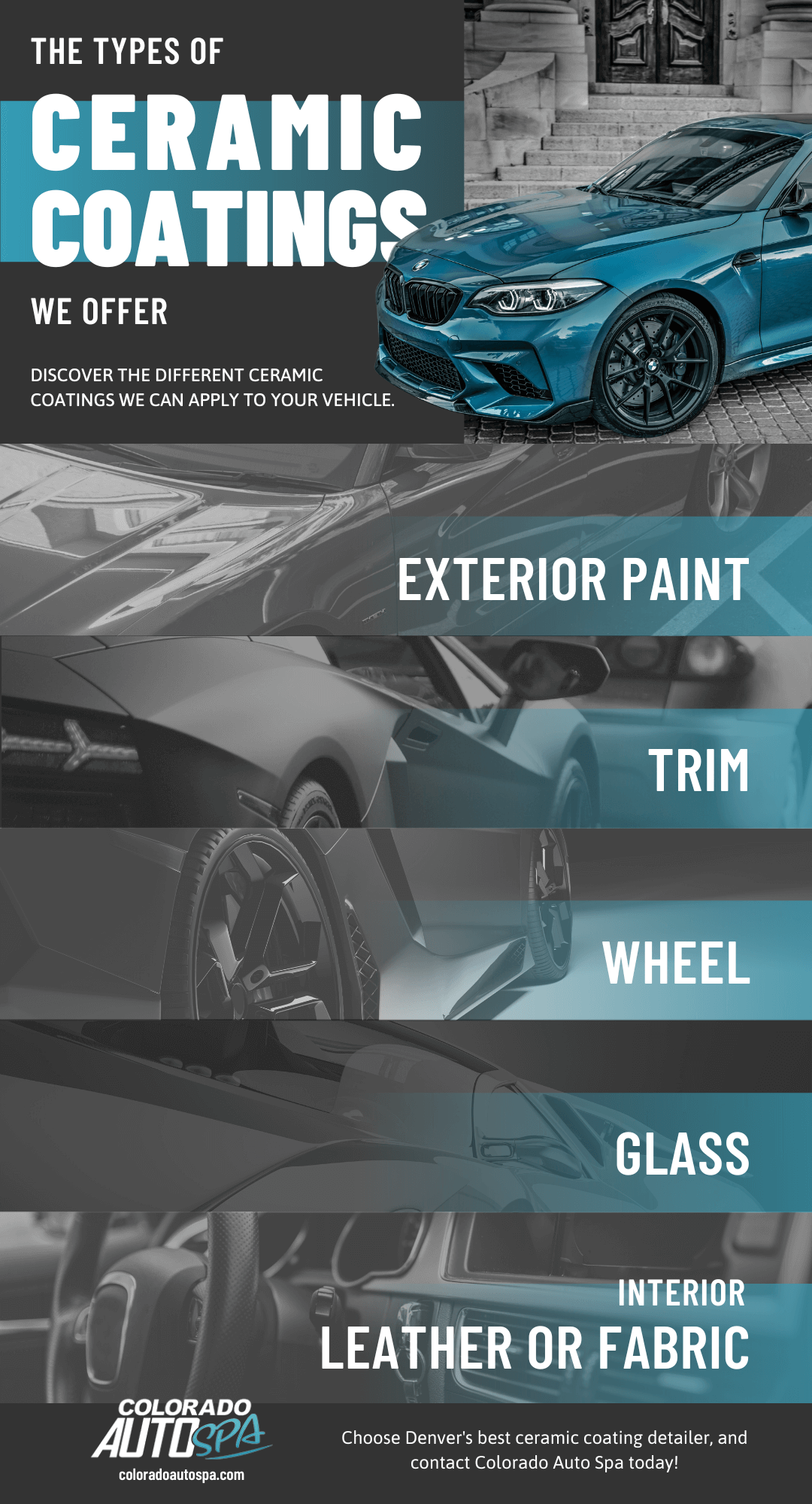Ceramic Coating vs Traditional Wax: Which Offers Better Protection?
Ceramic Coating vs Traditional Wax: Which Offers Better Protection?
Blog Article
Ceramic Finishing vs. Traditional Wax: Which Supplies Much Better Long-Term Protection?
The argument in between ceramic finishes and traditional wax for automobile defense has actually garnered significant interest amongst vehicle enthusiasts and professionals alike. While both satisfy of securing paint, their differences in longevity, application, and lasting upkeep expenses may influence a customer's option. Ceramic coatings boast premium long life and resistance to environmental elements, yet the complexity of their application increases questions concerning access and usefulness. As we discover these contrasting choices, it comes to be important to take into consideration not just the prompt benefits but additionally the implications for automobile treatment in time.
Summary of Ceramic Finish
Ceramic layer has gotten significant popularity among vehicle fanatics and detailers alike because of its sophisticated protective top qualities. This cutting-edge technology is created to develop a resilient, hydrophobic shield over a lorry's paint surface area, substantially boosting its resistance to environmental pollutants such as dirt, UV rays, and chemical discolorations. Unlike typical wax, which provides a short-lived layer of security, ceramic coverings bond at a molecular level with the paint, using long-lasting sturdiness-- usually expanding beyond two years with proper maintenance.
The application procedure includes thorough preparation of the car's surface area, including cleaning and polishing to make sure optimal adhesion. When applied, the layer cures to develop a durable layer that not only includes depth and gloss to the paint however also streamlines upkeep. With its hydrophobic residential properties, ceramic finishing enables water and dust to slide off even more conveniently, reducing the frequency of washes and lessening the danger of swirl marks.
Furthermore, ceramic coatings are available in different formulations, enabling customers to select products tailored to their particular requirements and preferences. In general, ceramic covering stands for a considerable advancement in paint defense technology, supplying remarkable efficiency compared to conventional options.
Introduction of Standard Wax
Generally considered a staple in automobile treatment, wax works as a prominent option for those seeking an uncomplicated method to boost and secure their car's paint - ceramic coating. Automotive wax generally comprises all-natural ingredients, such as carnauba, or synthetic substances, created to create a safety layer on the surface area of the paint. This layer not only improves the car's gloss and shine but likewise gives a barrier versus ecological pollutants
The application of wax is usually straightforward, making it easily accessible for both specialists and DIY enthusiasts. It can be used by hand or maker, enabling adaptability in the detailing procedure. Once applied, wax calls for a treating duration, after which it hardens to develop a safety shell. Wax is additionally known for its capability to ward off water, promoting a beading impact that aids in the avoidance of water spots and rust.
However, while wax is reliable for enhancing the aesthetic charm of a lorry, it is very important to keep in mind that the defense it offers may require a lot more constant reapplication contrasted to alternative products, such as ceramic layers. In general, conventional wax continues to be a preferred alternative for those prioritizing ease of use and instant visual enhancement.
Longevity and Longevity Comparison
While both ceramic finishes and typical my website wax offer protective benefits for automotive paint, their sturdiness and durability vary dramatically. Typical wax, typically made from all-natural carnauba or synthetic polymers, normally supplies a protective layer that lasts roughly three to six months. This relatively short lifespan demands normal reapplication to keep ideal defense.
On the other hand, ceramic layers are crafted from advanced nanotechnology, forming a covalent bond with the paint surface. This results in a robust, hydrophobic layer that can sustain for two to 5 years, depending upon the product and ecological conditions. The premium sturdiness of ceramic finishes is connected to their chemical framework, which supplies boosted resistance to scratches, UV rays, and oxidation.

Protection Against Ecological Elements
Shielding a car's paint from ecological factors is vital for maintaining its appearance and worth in time. Cars are constantly revealed to a variety of components, including UV rays, bird droppings, tree sap, acid rainfall, and roadway grime, all of which can endanger the integrity of the paintwork.
Ceramic finishings provide a robust defense versus these ecological aggressors. Unlike conventional wax, Continue which can weaken quickly under UV exposure, ceramic finishes create a durable, hydrophobic layer that resists the dangerous results of sunlight and toxic wastes. This sophisticated modern technology develops a chemical bond with the vehicle's surface, providing remarkable defense that lasts for several years, also in harsh conditions.
Standard wax, while less complicated to apply, commonly needs constant reapplication and uses minimal resistance to impurities and UV rays. With time, it can damage down, leaving the paint vulnerable to scrapes and oxidation. On the other hand, ceramic finishes keep their safety high qualities longer, substantially minimizing the danger of paint damage and guaranteeing that the car keeps its aesthetic appeal. Because of this, ceramic layers are significantly identified as the remarkable option for long-term protection versus environmental elements.
Application and Maintenance Differences
The techniques of application and succeeding maintenance for ceramic coatings and standard wax differ substantially, impacting the general customer experience and efficiency of each item. Ceramic coverings call for an even more elaborate application procedure, generally including surface area preparation that consists of washing, sanitizing, and polishing the vehicle. Once the surface is prepared, the ceramic coating is applied in a controlled setting, frequently requiring specialist knowledge to make certain proper curing and bonding to the paint.

While both products enhance car appearance, the longer-lasting security provided by ceramic finishings might validate their preliminary financial investment, regardless of the even more requiring application procedure. Alternatively, traditional wax remains a popular choice for those seeking a simpler, albeit temporary, solution.

Conclusion
To conclude, ceramic layers show substantial advantages over typical wax in terms of toughness and ecological security. With a lifespan prolonging two to five years and exceptional resistance to UV rays, dirt, and chemical stains, ceramic finishings provide a more effective solution for lasting automobile maintenance. Although the application process may call for specialist expertise, the resulting cost financial savings and minimized frequency of reapplication underscore the worth of ceramic finishes for those looking for optimal vehicle defense.
The dispute between ceramic coverings and traditional wax for lorry defense has actually gathered substantial interest among auto lovers and professionals alike. Unlike typical wax, which supplies a temporary layer of defense, ceramic finishings bond at a molecular degree with the paint, providing long-lasting longevity-- typically expanding beyond 2 years with proper maintenance.
While both ceramic coatings and standard wax deal protective advantages for automotive paint, their toughness and longevity differ dramatically. For vehicle fanatics seeking long-lasting protection, ceramic coatings offer a compelling advantage over standard wax items.
In conclusion, ceramic finishings show significant advantages over conventional wax in terms of durability and environmental security.
Report this page